
Throughout this webtext, we highlight and expand upon keywords—words and phrases that are central to the argument of the webtext and to the work of the Crossroads Collaborative. The keyword definitions we offer here are meant not as fixed representations or a singular way of knowing a particular concept. Rather, we offer these keywords as shifting constellations that contain and suggest different avenues for further exploration. For deeper reading about keywords as an academic tool, see Raymond Williams’s (1976) Keywords: A Vocabulary of Culture and Society. For more on keywords in youth studies, consider Nancy Lesko and Susan Talburt’s (2012) Keywords in Youth Studies: Tracing Affects, Movements, Knowledges.
agency ⤴
Those interested in understanding the discourses of and capacities for social change, how it is produced (enabled and constrained), under what conditions, who animates it, and to what end/s, often find themselves grappling with the concept of agency. At the Crossroads Collaborative, we begin with Radha S. Hegde’s (1998) reference to agency as “the coming together of subjectivity and the potential for action” (p. 288). We then draw significantly from Carl G. Herndl and Adela C. Licona’s (2007) understanding of agency as a “diffuse and shifting social location in time and space, into and out of which rhetors [read: social actors] move uncertainly” (p. 133). Like Herndl and Licona, we, too, are interested in the opportunities, as well as the constraints, for those engaged in change-making discourses, practices, and relationships. We extend this interest with a focus on how such change-making relates to youth, sexuality, health, and rights. We find Herndl and Licona’s concepts of constrained agency and agent function, as well as their considerations of the relationship between authority and agency, particularly useful to our work as we, too, understand the possibility for social action to be sometimes but not always reproducible across social contexts, practices, and relations, and neither entirely determined by structures nor entirely bound by the neoliberal illusion of a fully autonomous individual.
Hegde, Radha S. (1998). A view from elsewhere: Locating difference and the politics of representation from a transnational feminist perspective. Communication Theory, 8(3), 271–297.
Herndl, Carl G., & Licona, Adela C. (2007). Shifting agency: Agency, kairos, and the possibilities of social action. In Mark Zachry & Charlotte Thralls (Eds.), Communicative practices in workplaces and the professions: Cultural perspectives on the regulation of discourse and organizations (pp. 133–153). Amityville, NY: Baywood.
asset-driven ⤴
Asset-driven discourses and practices are rooted in the belief in the strength and value of all human beings. This approach is committed to recuperating and teaching the value and potential of lived individual, home, and community knowledges, particularly including culturally relevant knowledges. Norma González, Luis C. Moll, and Cathy Amanti’s (2005) concept of funds of knowledge can inform such an approach.
Cammarota, Julio. (2007). A social justice approach to achievement: Guiding Latina/o
students toward educational attainment with a challenging, socially relevant curriculum. Equity & Excellence in Education, 40(1), 87–96.
Delgado Bernal, Dolores. (2001). Learning and living pedagogies of the home: The mestiza consciousness of Chicana students. International Journal of Qualitative Studies in Education, 14(5), 623–639.
González, Norma, Moll, Luis C., & Amanti, Cathy. (2005). Funds of knowledge: Theorizing practice in households, communities, and classrooms. Mahwah, NJ: Erlbaum.
Ladson-Billings, Gloria. (1995). Toward a theory of culturally relevant pedagogy. American
Educational Research Journal, 32(3), 465–491.
critical localism ⤴
Our work in the Collaborative is informed by Steven Goldzwig’s (1998) concept of “critical localism.” This concept is one that calls us to know the communities we work in deeply and to continually consider what a commitment to local knowledges might look like in terms of our research. Research practices are made locally relevant, responsive, and meaningful when they are informed by critical localism. Critical localism, then, is a term that informs our way of doing research in that it commits us to listening to and learning from the discourses and practices that circulate in the local communities within which we work.
Goldzwig, Steven. (1998). Multiculturalism, rhetoric and the twenty-first century. The
Southern Journal of Communication, 63(4), 273–289.
critical race theory, CRT ⤴
Our work at the Collaborative and in the community has been informed by scholarship identified as Critical Race Theory, CRT, which emerged in the context of critical legal studies in the 1970s. This theoretical intervention began with an acknowledgement of racism and its relationship to white supremacy and resisted colorblind discourses, practices, and assumptions that emerged in the post-civil rights/post-Jim Crow era. CRT begins with the understanding that racism is historic and ongoing in the United States with implications across social, cultural, academic, and legal contexts. To understand the effects of racialized injustices and inequalities, CRT scholars are committed to the stories from below, or to those lived experiences that counter dominant discourses and assumptions. Like the asset-driven approach described here, CRT is also committed to considering and making visible structural inequalities and interlocking and intersecting systems of marginalization and oppression.
Crenshaw, Kimberlé W. (2011). Twenty years of critical race theory: Looking back to move forward. Connecticut Law Review, 43(5), 1255–1352.
Ladson-Billings, Gloria. (2009). Race still matters: Critical race theory in education. In Michael W. Apple, Wayne Au, & Luis Armando Gandin (Eds.), The Routledge international handbook of critical education (pp. 110–122). New York, NY: Routledge.
Ladson-Billings, Gloria, & Tate, William F. I. V. (1995). Toward a critical race theory of education. Teachers College Record, 97(1), 47–68.
Matsuda, Mari J. (1991). Beside my sister, facing the enemy: Legal theory out of coalition. Stanford Law Review, 43(6), 1183–1192.
deficit-driven ⤴
Deficit-driven discourses and understandings of non-dominant others have been reproduced across disciplines and community contexts. Such understandings are rooted in dominant, and often stereotypical, assumptions about knowledge, learning, desire, behavior, and aptitude. They are negatively framed through stigmatizing and even pathologizing discourses of risk that ignore the place and potential of social and cultural capital, particularly in and from non-dominant contexts, as well as the force and function of structural inequalities. Academics and activists interested in disrupting deficit-driven discourse look to funds of knowledge that can point to an altogether different perspective and line of inquiry based first in asset-driven understandings of difference and of marginal and marginalized communities.
funds of knowledge ⤴
Our use and understanding of the concept of the funds of knowledge derives from the work of Norma González, Luis C. Moll, and Cathy Amanti (2005) titled Funds of Knowledge: Theorizing Practices in Households, Communities, and Classrooms. This work informs ours at the Crossroads Collaborative as well as the inquiry and analysis we practice and perform. Our approach to youth emerges from an understanding of them as knowledgeable and of their perspectives and experiences as valuable. Such an approach means we are interested in the everyday practices in which youth are engaged and how their lived experiences inform their critical and creative discursive productions, especially as these speak to their confrontations with inequalities and injustices as well as their successful navigations of social worlds. Following a funds of knowledge approach, we are interested in disrupting oppressive perceptions of non-dominant youth and their home communities by focusing first on their strengths and assets.
González, Norma, Moll, Luis C., & Amanti, Cathy. (2005). Funds of knowledge: Theorizing practice in households, communities, and classrooms. Mahwah, NJ: Erlbaum.
knowledges ⤴
We deploy the term “knowledges” rather than “knowledge” to be explicit about the different—sometimes competing, sometimes complementary—knowledges that circulate in the communities in which we are engaged. These range from academic knowledges across disciplinary boundaries, to youth knowledges, to broader community knowledges. Recognizing that different knowledge systems are at play in and from distinct locations, we can also recognize that such knowledges are valid and can inform our research. When we position ourselves as learners who can be informed by the lived knowledges guiding everyday decisions, we open ourselves to deeper understandings of youth practices, interests, needs, strengths, dreams, and desires. In the Crossroads Collaborative, we also work to ensure that differing knowledges are translated, so that those of us involved in local collaborations are legible to one another as collaborators who share interests around youth, sexuality, health, and rights.
latcrit ⤴
Latina/Latino Critical Theory, LatCrit, arose from CRT and critical legal studies with an emphasis on the implications of racial and racialized, as well as other structural inequalities, for Latin@s across contexts with a particular emphasis on legal and educational contexts. It serves as a theoretical intervention to the erasures of Latinidad that are affected by Black/White binaries and therefore contributes to a more complicated understanding of race and racialization.
Delgado Bernal, Dolores. (2002). Critical race theory, Latino critical theory, and critical raced-gendered epistemologies: Recognizing students of color as holders and creators of knowledge. Qualitative Inquiry, 8(1), 105–126.
Solórzano, Daniel G, & Delgado Bernal, Dolores. (2001). Examining transformational resistance through a critical race and Latcrit theory framework: Chicana and Chicano students in an urban context. Urban Education, 36(3), 308–342.
Solórzano, Daniel, Villalpando, Octavio, & Oseguera, Leticia. (2005). Educational inequities and Latina/o undergraduate students in the United States: A critical race analysis of their educational progress. Journal of Hispanic Higher Education, 4(3), 272–294.
Solórzano, Daniel G, & Yosso, Tara J. (2001). From racial stereotyping and deficit discourse toward a critical race theory in teacher education. Multicultural Education, 9(1), 2–8.
Solórzano, Daniel G, & Yosso, Tara J. (2001). Critical race and Latcrit theory and method: Counter-storytelling. International Journal of Qualitative Studies in Education, 14(4), 471–495.
play ⤴
Our deliberate engagement with the concept of play in our work is a demonstration of the resistance we practice at the Crossroads Collaborative to the imagined and rigidly imposed divisions of an adult–youth binary. In other words, we take play seriously. Our working definition of play is informed by Ken S. McAllister’s (2004) Game Work: Language, Power, and Computer Game Culture, in which McAllister demonstrates the ubiquity of play as a term and a practice describing our social and cultural activities and productions. Following Londie T. Martin (2013) in The Spatiality of Queer Youth Activism: Sexuality and the Performance of Relational Literacies through Multimodal Play, we understand play as a rhetorically significant and often relational mode of critical and creative meaning making. When understood and approached as serious work, as we believe it should be, play can illuminate both the joyful and the unjust.
Brown, Stuart A. (2009). Play: How it shapes the brain, opens the imagination, and invigorates the soul. New York, NY: Penguin.
Martin, Londie T. (2013). The spatiality of queer youth activism: Sexuality and the performance of relational literacies through multimodal play. (Doctoral dissertation). University of Arizona, Tucson, AZ. Retrieved from http://arizona.openrepository.com/arizona/handle/10150/293546
Mcallister, Ken S. (2004). Game work: Language, power, and computer game culture. Tuscaloosa, AL: The University of Alabama Press.
Sutton-Smith, Brian. (1997). The ambiguity of play. Cambridge, MA: Harvard University Press.
Cammarota, Julio, & Fine, Michelle (Eds.). (2008). Revolutionizing education: Youth participatory action research in motion. New York, NY: Routledge.
Duncan-Andrade, Jeff. (2006). Urban youth, media literacy, and increased critical civic participation. In Shawn Ginwright, Pedro Noguera, & Julio Cammarota (Eds.), Beyond resistance! Youth activism and community change: New democratic possibilities for practice and policy for America's youth (pp. 149–169). New York, NY: Routledge.
Finley, Susan. (2011). Critical arts-based inquiry: The pedagogy and performance of a radical ethical aesthetic. In Norman K. Denzin & Yvonna S. Lincoln (Eds.), The Sage handbook of qualitative research (4th ed.) (pp. 435–450). Thousand Oaks, CA: Sage.
Hocks, Mary. (2009). Cyberfeminism intersects writing research: Studies in digital rhetoric. In Kristine L. Blair, Radhika Gajjala, & Christine Tulley (Eds.), Webbing cyberfeminist practice: Communities, pedagogies and social action (pp. 235–254). Cresskill, NJ: Hampton Press.
Jocson, Korina M. (2006). “Best of both worlds”: Youth poetry as social critique and form of empowerment. In Shawn Ginwright, Pedro Noguera, & Julio Cammarota (Eds.), Beyond resistance! Youth activism and community change: New democratic possibilities for practice and policy for America's youth (pp. 129–148). New York, NY: Routledge.
Muñoz, José Esteban. (1999). Disidentifications: Queers of color and the performance of politics. Minneapolis, MN: University of Minnesota Press.
Naples, Nancy A. (2003). Feminism and method: Ethnography, discourse analysis, and activist research. New York, NY: Routledge.
Naples, Nancy A., & Desai, Manish (Eds.). (2002). Women's activism and globalization: Linking local struggles and transnational politics. New York, NY: Routledge.
Puar, Jasbir K. (2007). Terrorist assemblages: Homonationalism in queer times. Durham, NC: Duke University Press.
Reason, Peter, & Bradbury, Hilary. (Eds). (2006). Handbook of action research: Concise paperback edition. Thousand Oaks, CA: Sage.
Selfe, Cynthia. (2009). Response: Paying attention to digital media: Three feminist corollaries. In Kristine L. Blair, Radhika Gajjala, & Christine Tulley (Eds.), Webbing cyberfeminist practice: Communities, pedagogies and social action (pp. 255–259). Cresskill, NJ: Hampton Press.
Smith, Linda Tuhwai. (1999). Decolonizing methodologies: Research and indigenous peoples. London, England: Zed Books.
Background photographs in this section by Adela C. Licona.
Algarín, Miguel. (1994). Introduction: The sidewalk of high art. In Migual Algarin & Bob Holman (Eds.), Aloud: Voices from the Nuyorican poets café (pp. 3–28). New York, NY: Henry Holt and Company.
Algarín, Miguel & Holman, Bob (Eds.). (1994). Aloud: Voices from the Nuyorican poets café. New York, NY: Henry Holt and Company.
Arizona: UN experts warn against “a disturbing legal pattern hostile to ethnic minorities and immigrants.” (2010). United Nations Human Rights: Office of the High Commissioner for Human Rights. Retrieved July 3, 2013, from http://www.ohchr.org/en/NewsEvents/Pages/DisplayNews.aspx?NewsID=10035&LangID=E
Benson, Peter L. (2003). Developmental assets and asset-building community: Conceptual and empirical foundations. In Richard M. Lerner & Peter L. Benson (Eds.), Developmental assets and asset-building communities: Implications for research, policy, and practice (pp. 19–43). Norwell, MA: Kluwer.
Blitefield, Jerry. (2004). Populist poetry or rantum-scantum? The civil disobedients of poetry slams. In Gerard A. Hauser & Amy Grim (Eds.), Rhetorical democracy: Discursive practices of civic engagement (pp. 107–13). Mahwah, NJ: Lawrence Erlbaum.
Chávez, Karma R. (2010). Poetic polemics: A (queer feminist of color) reflection on a gay slam poet. Text and Performance Quarterly 30(4), 444–452.
Côté, James E., & Allahar, Anton L. (Eds.). (1996). Generation on hold: Coming of age in the late 20th century. New York, NY: New York University Press.
Delgado Bernal, Dolores. (2002). Critical race theory, Latino critical theory, and critical raced-gendered epistemologies: Recognizing students of color as holders and creators of knowledge. Qualitative Inquiry, 8(1), 105–126.
Holman, Bob. (1994). Invocation: congratulations. you have found the hidden book. In Migual Algarin & Bob Holman (Eds.), Aloud: Voices from the Nuyorican poets café (pp. 1–2). New York, NY: Henry Holt and Company.
Hoffman, Tyler. (2011). American poetry in performance: From Walt Whitman to hip hop. Ann Arbor, MI: University of Michigan Press.
Jarratt, Susan C. (2002). Sappho's memory. Rhetoric Society Quarterly, 32(1), 11–43.
Lerner, Richard M., Brentano, Cornelia, Dowling, Elizabeth M., & Anderson, Pamela M. (2003). Positive youth development: Thriving as the basis of personhood and civil society. Applied Developmental Science, 7(3), 172–180.
Lerner, Richard M., Almerigi, Jason B., Theokas, Christina, & Lerner, Jacqueline V. (2005). Positive youth development: A view of the issues. Journal of Early Adolescence, 25(1), 10–16.
Lesko, Nancy, & Talburt, Susan. (2012). Keywords in youth studies: Tracing affects, movements, knowledges. New York, NY: Routledge.
Licona, Adela C. (2012). Zines in third space: Radical cooperation and borderlands rhetoric. Albany, NY: State University Press of New York.
Licona, Adela C., & Russell, Stephen T. (2013). Transdisciplinary and community literacies: Shifting discourses and practices through new paradigms of public scholarship and action-oriented research. Community Literacy Journal 8(1), 1–7.
Licona, Adela C., & Russell, Stephen T. (Eds.). (2013). Youth, sexuality, health, & rights [Special issue]. Community Litearcy Journal, 8(1).
Lomawaima, K. Tsianina. (2010). Arizona at the crossroads 2010. Presentation sponsored by Faculty Governence and the University of Arizona President's Office, Tucson, AZ.
Low, Bronwen E. (2011). Slam school: Learning through conflict in the hip-hop and spoken word classroom. Stanford, CA: Stanford University Press.
Martin, Londie T. (2013). The spatiality of queer youth activism: Sexuality and the performance of relational literacies through multimodal play. (Doctoral dissertation). University of Arizona, Tucson, AZ. Retrieved from http://arizona.openrepository.com/arizona/handle/10150/293546
Martin, Londie T., & Licona, Adela C., with the Crossroads Collaborative. (2012). Youth and legislation: Changing coversations through action research. Crossroads Connections, 1(2), 1–4.
Mcallister, Ken S. (2004). Game work: Language, power, and computer game culture. Tuscaloosa, AL: The University of Alabama Press.
Neuendorf, Kimberley A. (2002). The content analysis guidebook. Thousand Oaks, CA: Sage.
Parmar, Priya. (2009). Knowledge reigns supreme: The critical pedagogy of hip hop activist KRS-ONE. Rotterdam, Netherlands: Sense Publishers.
Pough, Gwendolyn D. (2007). An introduction of sorts for hip-hop feminism. In Gwendolyn D. Pough, Elaine Richardson, Aisha Durham, & Rachel Raimist (Eds.), Home girls make some noise: Hip hop feminist anthology (pp. v–ix). Mira Loma, CA: Parker Publishing.
Roth, Jodie L., & Brooks-Gunn, Jeanne. (2003). What is a youth development program? Identification and defining principles. In Francine Jacobs, Donald Wertlieb, & Richard M. Lerner (Eds.), Enhancing the life chances of youth and families: Contributions of programs, policies, and service systems: Vol. 2. Handbook of applied developmental science: Promoting positive child, adolescent, and family development through research, policies, and programs (pp. 197–223). Thousand Oaks, CA: Sage.
Rudas, Tamás. (2004). Probability theory: A primer. Thousand Oaks, CA: Sage.
Somers-Willett, Susan B. A. (2009). The cultural politics of slam poetry: Race, identity, and the performance of popular verse in America. Ann Arbor, MI: University of Michigan Press.
Stockton, Kathryn Bond. (2009). The queer child, or growing sideways in the twentieth century. Durham, NC: Duke University Press.
Talburt, Susan. (2004). Intelligibility and narrating queer youth. In Mary Louise Rasmussen, Eric Rofes, & Susan Talburt (Eds.), Youth and sexualities: Pleasure, subversion, and insubordination in and out of school (pp. 17–40). New York, NY: Palgrave Macmillan.
Tolman, Deborah L., & McClelland, Sara I. (2011). Normative sexuality development in adolescence: A decade in review, 2000–2009. Journal of Research on Adolescence, 21(1), 242–255.
Williams, Raymond. (1976). Keywords: A vocabulary of culture and society. New York, NY: Oxford University Press.
Hise, Steev. (photographer) (2005). Untitled mural at Dry River Collective, Tucson, Arizona. [photograph]. Retrieved August 15, 2015 from https://flic.kr/p/7ScAc
Hise, Steev. (photographer) (2005). Unity amid diversity, Tucson, Arizona. [photograph]. Retrieved August 15, 2015 from https://flic.kr/p/cUWzR
Hise, Steev. (photographer) (2005). Don't waste the scenic santa ritas, Tucson, Arizona. [photograph]. Retrieved August 15, 2015 from https://flic.kr/p/jJMs1
Hise, Steev. (photographer) (2005). Untitled mural, Tucson, Arizona. [photograph]. Retrieved August 15, 2015 from https://flic.kr/p/7S6QB
Hise, Steev. (photographer) (2005). Air meets muse, Tucson, Arizona. [photograph]. Retrieved August 15, 2015 from https://flic.kr/p/6VtWn
Hise, Steev. (photographer) (2005). Untitled mural, Tucson, Arizona. [photograph]. Retrieved August 15, 2015 from https://flic.kr/p/dsTom
Licona, Adela C. (photographer) (2013). #1 of desert stuff: Tucson taxonomies. [photograph].
Licona, Adela C. (photographer) (2013). #2 Shards of Blue. [photograph].
Licona, Adela C. (photographer) (2013). #3 Undulations. [photograph].
Licona, Adela C. (photographer) (2013). DJ spinning at the TYPS 2013 Championship in Tucson, Arizona. [photograph].
Licona, Adela C. (photographer) (2013). Ella en la pared. [photograph].
Licona, Adela C. (photographer) (2013). The mic stand used by poets at the TYPS 2013 Championship in Tucson, Arizona. [photograph].
Phillips, Logan. (photographer) (2010). Tucson Youth Poetry Slam logo, Spoken Futures, Inc. [photograph].
Background photographs in this section by Adela C. Licona.
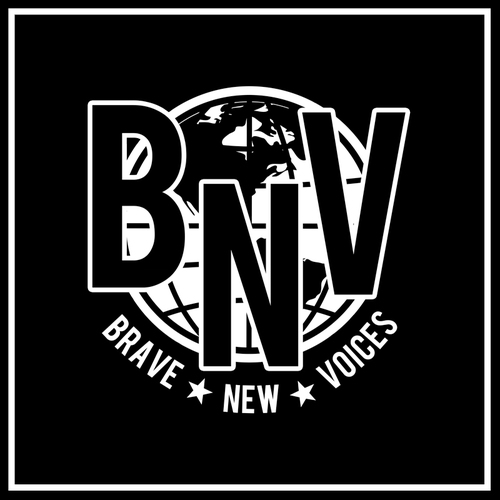 Brave New Voices
Brave New Voices
http://youthspeaks.org/bravenewvoices/
Best known as a festival, Brave New Voices is a growing network of over 70 organizations. Brave New Voices is committed to building safe spaces that challenge young people to develop and present the power of their voices.
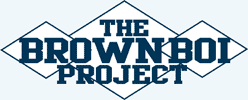 Brown Boi Project
Brown Boi Project
http://www.brownboiproject.org/
The Brown Boi Project is a community of masculine of center womyn, men, two-spirit people, transmen, and our allies committed to transforming our privilege of masculinity, gender, and race into tools for achieving racial and gender justice.
Complex Movements
http://complexmovements.com/
Complex Movements is a Detroit-based artist collective composed of graphic designer/fine artist Wesley Taylor, music producer/filmmaker Waajeed, hip-hop lyricist/activist Invincible, and creative technologist Carlos (L05) Garcia.
dirtyverbs
http://www.dirtyverbs.com/
Logan Timoteo Dirtyverbs Phillips is a bilingual poet, performer and transdisciplinary artist born in Tombstone, Arizona. Of Irish-Slavic descent, he spent the first eighteen years of his life fourteen miles from the United States–Mexico border.
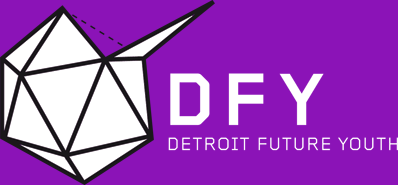 Detroit Future Youth
Detroit Future Youth
http://detroitfutureyouth.tumblr.com/
DF Youth aims to strengthen and deepen youth social justice organizing in Detroit by partnering with youth programs that focus on social justice based education and multimedia creation, who are using digital media to transform people and communities. Network members share a commitment to authentic youth-leadership development that fosters the future creators, problem-solvers and social change-makers Detroit needs.
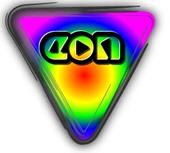 Eon Youth Program
Eon Youth Program
http://wingspan.org/programs/youthprogram/youth-and-family-services/
Eon works to strengthen the gay, lesbian, bisexual, two spirit, transgender, queer, questioning, intersexed, and straight ally youth communities by creating social opportunities, providing information and support on health issues, advocating for youth rights and challenging society’s perceptions of youth as they face institutionalized oppressions that target the many facets of their identities. Our events and activities are free of charge and open to all youth ages 23 and under.
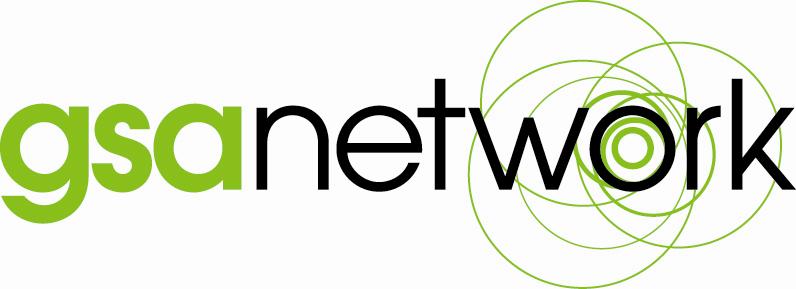 Gay-Straight Alliance Network
Gay-Straight Alliance Network
http://www.gsanetwork.org/
Gay-Straight Alliance Network is a national youth leadership organization that connects school-based Gay-Straight Alliances (GSAs) to each other and community resources through peer support, leadership development, and training.
Kore Press & Grrls Literary Activism
http://www.korepress.org/Grrrls.htm
In the spirit of fostering a new generation of diverse, confident, independent-minded and creative artists/citizens/leaders, the Kore Press Grrls Literary Activism Workshops empower young women with the skills necessary to express themselves on social issues that matter most to them and become potent agents of change.
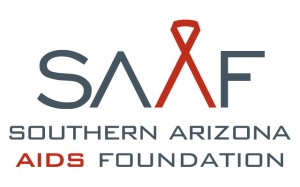 Southern Arizona AIDS Foundation (SAAF)
Southern Arizona AIDS Foundation (SAAF)
http://saaf.org/
SAAF continues to be the only community-based organization in Southern Arizona providing case management and ancillary support services for people living with HIV/AIDS and their families, culturally appropriate prevention and education programs to reduce the rate of infection, and extensive trainings and opportunities for community members to fill critical support roles.
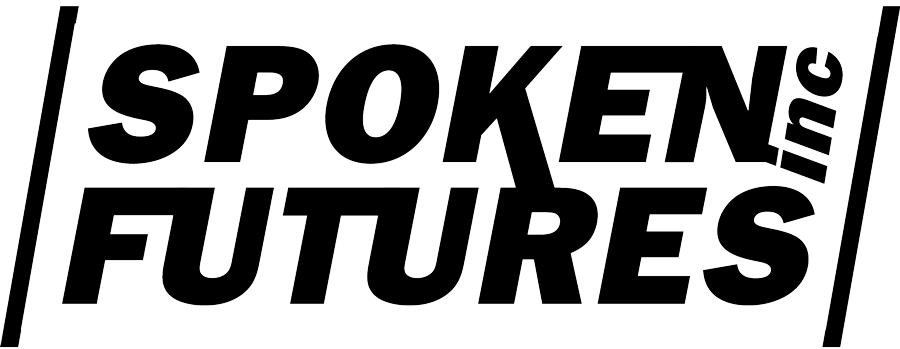 Spoken Futures, Inc.
Spoken Futures, Inc.
http://www.spokenfutures.org/
Spoken Futures, Inc. widens access to the literary arts and community engagement for young people across Southern Arizona. Through dynamic competitions such as the Tucson Youth Poetry Slam and innovative social justice programs such as Liberation Lyrics, Spoken Futures creates youth-centered spaces. Through dedication, irreverence and love we use poetry as a tool to dream tomorrow, honor yesterday and live today.
TruthSarita Consulting, LLC
http://www.truthsarita.com/
Started and run by Sarah Gonzales, TruthSarita is a social justice consulting business grounded in Sarah's belief that, “as a community, we have a collective power to create the resources we need and can continue to step away from the structural inequities that block forward progress. It can be extremely difficult to stop investing in systems we were taught to rely on but we know the destructive impact to our community when we continuously ingest racism, sexism, homophobia, classism, ableism and other oppressions via the media, the justice system, in our schools and economic systems among many others.”
Tucson Youth Poetry Slam
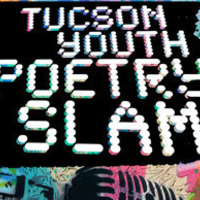 http://www.tucsonyouthpoetryslam.org/
http://www.tucsonyouthpoetryslam.org/
The Tucson Youth Poetry Slam advocates literacy, critical thinking and youth voice through poetry competitions, workshops and community showcases. Founded in 2010, the program regularly collaborates with diverse organizations across Tucson. The monthly poetry slam competition is open to all youth 19 & under and is held every 3rd Saturday at Bentley’s House of Coffee & Tea, 1730 E Speedway. Crowds at the TYPS regularly top 100 people.
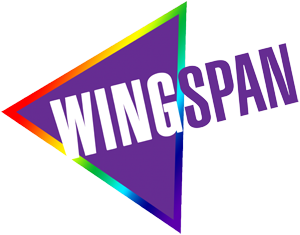 Wingspan
Wingspan
http://saaf.org/about-saaf/wingspan-programs-and-affiliates/
Wingspan is Southern Arizona’s lesbian, gay, bisexual and transgender (LGBT) community center. Wingspan is a non-profit, charitable organization that serves Tucson and Southern Arizona.
Background photographs in this section by Adela C. Licona.